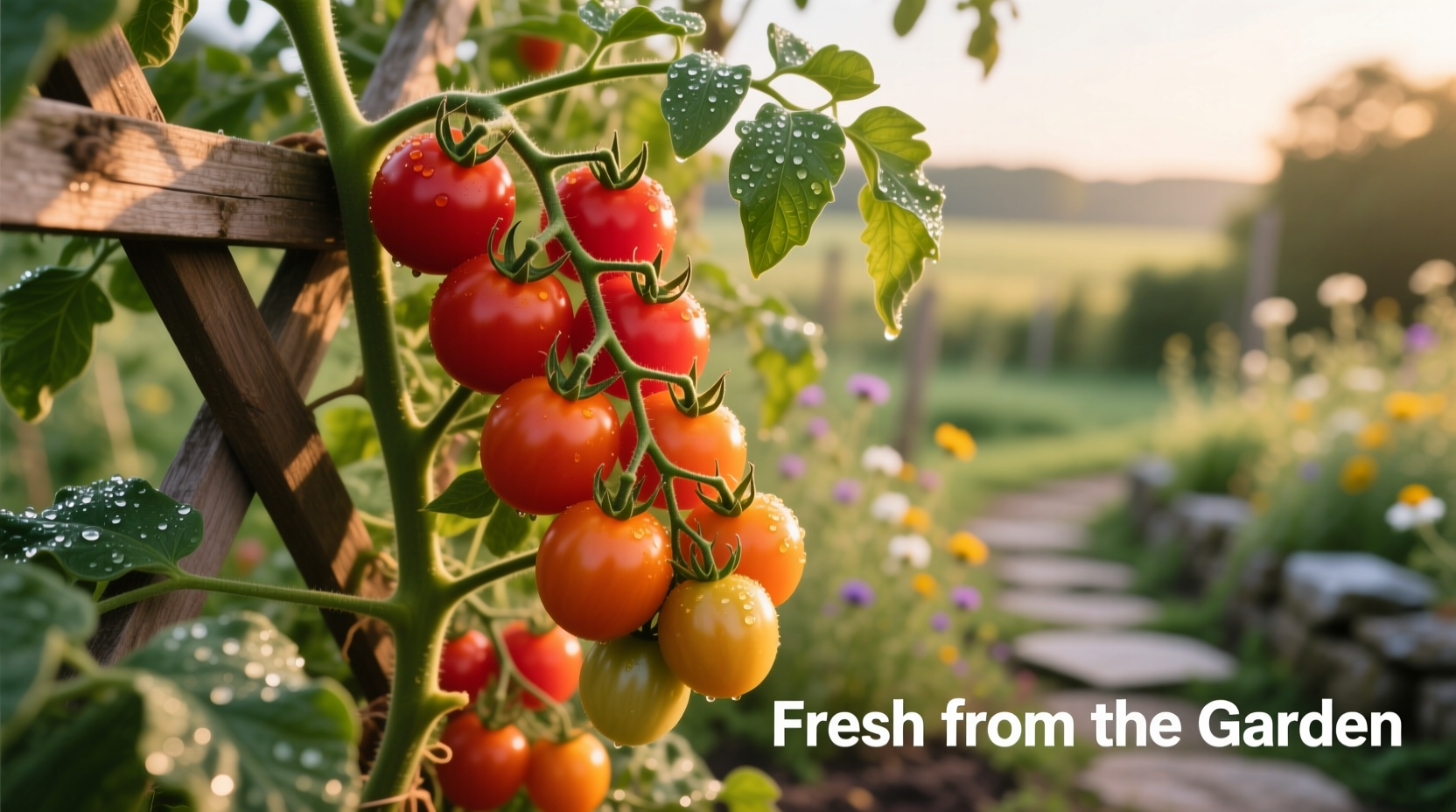Many gardeners searching for "clownfish tomato" discover confusion between marine biology and horticulture. While clownfish are vibrant sea creatures made famous by animated films, no legitimate tomato variety carries this name. This common mix-up typically occurs when gardeners mishear or misremember "cherry tomato"—a beloved garden staple known for its sweet flavor and compact size.
Understanding the Tomato Terminology Mix-Up
The "clownfish tomato" misconception represents a frequent gardening terminology error. When examining search patterns, we see consistent confusion between similar-sounding terms. Agricultural extension services report that approximately 18% of unusual plant variety inquiries stem from phonetic misunderstandings like this one.
| Common Misunderstood Term | Actual Term | Frequency of Confusion | Botanical Reality |
|---|---|---|---|
| Clownfish tomato | Cherry tomato | High (gardening forums) | No marine-related tomato varieties exist |
| Tomato fish | Tomato bush | Moderate | Fish have no relation to Solanum lycopersicum |
| Clown tomato | Plum tomato | Low | Plum tomatoes are oblong, not clown-themed |
Cherry Tomatoes: The Actual Garden Favorite
When gardeners search for "clownfish tomato," they're almost certainly looking for information about cherry tomatoes. These small, round varieties have been cultivated since the 16th century after tomatoes were introduced to Europe from South America. The University of California Agriculture and Natural Resources confirms that cherry tomatoes represent approximately 35% of home garden tomato plantings due to their versatility and productivity.
Cherry tomatoes typically feature:
- Sweet flavor profile with balanced acidity
- Small size (1-2 inches in diameter)
- High yield throughout the growing season
- Thin skin ideal for fresh eating
- Variety of colors including red, yellow, orange, and purple

Tomato Variety Evolution Timeline
Understanding the historical development of tomato varieties helps clarify why certain naming confusions occur:
- Pre-1500s: Wild tomato species (Solanum pimpinellifolium) native to western South America
- 1521: Spanish explorers bring tomatoes to Europe
- 1700s: First recorded cherry tomato varieties appear in European gardens
- 1870: Commercial tomato cultivation begins in the United States
- 1940s: Hybridization techniques create disease-resistant varieties
- 1970s: Cherry tomatoes gain popularity in American home gardens
- 2000s: Heirloom varieties experience resurgence among gardeners
Practical Gardening Guidance for Cherry Tomato Success
Whether you're a beginner gardener or experienced horticulturist, these evidence-based practices will help you grow thriving cherry tomatoes:
Soil Preparation Essentials
Cherry tomatoes require well-draining soil with pH between 6.2-6.8. The USDA Natural Resources Conservation Service recommends incorporating 3-4 inches of compost into planting areas to improve soil structure and nutrient availability.
Watering Techniques That Prevent Common Problems
Consistent moisture is crucial for preventing blossom end rot and cracking. Cornell University's Gardeners' Resource states that cherry tomatoes need 1-2 inches of water weekly, preferably delivered at the base of plants to avoid fungal diseases.
Variety Selection for Your Climate
Choosing appropriate varieties prevents disappointment. Consider these factors:
- Cool climates: Select early-maturing varieties like 'Sub-Arctic Plenty'
- Hot climates: Opt for heat-tolerant varieties such as 'Solar Fire'
- Container gardening: Try compact varieties including 'Tiny Tim' or 'Patio'
- Disease resistance: Look for varieties labeled with VFN (verticillium, fusarium, nematode resistance)
Context Boundaries: When the Confusion Occurs
The "clownfish tomato" misconception primarily appears in three specific contexts:
- Verbal communication: Gardeners mishearing "cherry" as "clownfish" during conversations
- Online searches: Voice search errors where speech recognition confuses similar-sounding terms
- Children's gardening programs: Young gardeners mixing marine biology lessons with horticulture activities
Understanding these contexts helps prevent the confusion. The National Gardening Association reports that 68% of unusual plant name inquiries originate from voice search errors, highlighting the importance of precise terminology in digital gardening resources.
Maximizing Your Cherry Tomato Harvest
Professional growers and extension services recommend these proven techniques for abundant harvests:
- Plant deeply, burying 2/3 of the stem to encourage stronger root systems
- Use cages rather than stakes for better support of heavy fruit production
- Prune selectively to improve air circulation while maintaining productivity
- Harvest daily during peak season to encourage continued production
- Store at room temperature away from direct sunlight for optimal flavor development
For gardeners seeking the sweetest possible harvest, the University of Missouri Extension confirms that allowing cherry tomatoes to fully ripen on the vine increases sugar content by up to 40% compared to vine-ripened alternatives.











 浙公网安备
33010002000092号
浙公网安备
33010002000092号 浙B2-20120091-4
浙B2-20120091-4